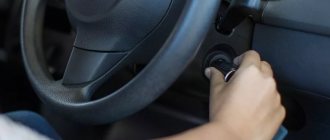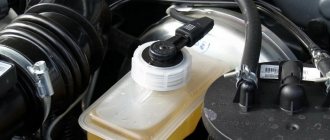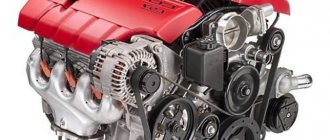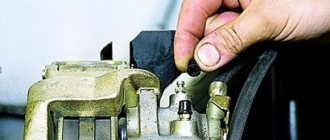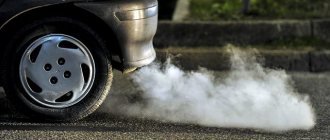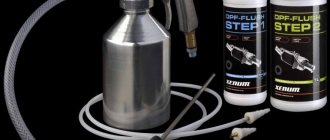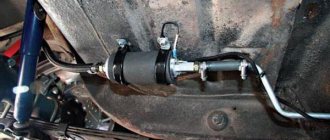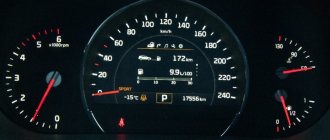A distinctive feature of a diesel engine from many gasoline analogues is the absence of an ignition system, since the mixture of fuel and air in the diesel cylinders ignites independently (from strong compression and heating). In this case, it becomes necessary to supply fuel to the combustion chamber under high pressure.
There are several types of diesel engine power systems, which differ in design and implementation, but the common thing is that each fuel system pumps fuel for subsequent injection of diesel fuel through diesel injectors.
It is quite obvious that for diesel engines, maximum tightness of the entire fuel system is extremely important. If air gets in, then the required injection pressure cannot be achieved. Moreover, excess air can damage expensive elements of the fuel supply system. Next, we will look at why and how to de-air the fuel system of a diesel engine.
Main characteristics
| Make: BMW | Gearbox: automatic / manual |
| Model: X1 | Body: sedan, coupe, station wagon |
| Year of issue: 2009 | Power: petrol/diesel |
| Engine capacity: 1985 cm³ | Drive: rear |
–>
Cars with diesel engines are no less popular among motorists than traditional gasoline ones. However, the specific design and operation of such power units, or more precisely, the presence of a high-pressure fuel pump (HPF), imposes increased demands on the performance of the diesel supply system. Air removal plays a key role.
You can find many opinions on how to properly bleed the fuel system of a diesel engine , but one thing can be said for sure - if there are air bubbles inside, then you need to get rid of them urgently. Thanks to this procedure you can avoid:
- critical decrease in pressure indicators in the pump;
- ineffective fuel injection into the cylinders;
- inability to start the car on the first try;
- frequent cases of sudden engine stops.
Determining the need for pumping is quite simple, but you will need an assistant. While you disconnect the fuel injection pump wires from the injectors and unscrew the nuts and observe the diesel supply, an assistant should rotate the crankshaft using an electric starter. If you find that fuel is not flowing, it means that air has accumulated inside and needs to be removed.
Operating principle
krassawa Blog Filling spark plugs with gasoline: why and how to start the engine
Let's start with the fact that almost all cars with a similar power unit produced after 1999 are modified with a Common rail fuel injection system. This technology was developed by German specialists at the end of the twentieth century. The main task of the Rail is to supply fuel from the general rail pressure to the injectors.
Now let's figure out what the fuel system of a diesel engine is, how it works, well, at least in general terms. Figuratively speaking, the equipment can be divided into two components: low and high pressure lines. The first prepares the fuel for transferring liquid to the second. After which the system described above actually comes into play, which sends diesel fuel, as already mentioned, to the injectors, and they carry out the final injection of fuel directly into the combustion chamber.
What needs to be done to bleed the fuel system of a diesel engine?
A common and serious mistake made by motorists is pumping only the pump, which does not always help, since it does not involve the use of all elements of the systems. There are two real ways to bleed the fuel system of a diesel engine , and they do not require ultra-expensive tools.
- You can perform the procedure using a powerful vacuum cleaner (takes an average of 15-20 minutes). First, the filter is removed and after drying, the glass is inserted back. Additional equipment you will need: a syringe, a hose 20-30 centimeters long, a vacuum cleaner. We find 2 fittings on the casing and insert a hose with a syringe into the one that is intended for pumping, from which you need to remove the piston and instead insert the vacuum cleaner nozzle (the elements must be connected tightly). Having slightly unscrewed the fitting, run the vacuum cleaner for 15 seconds until foam appears in the syringe. We wait until the fuel liquid acquires a uniform consistency, then tighten the fitting and turn off the vacuum cleaner.
Another option for quickly pumping the fuel system of a diesel engine is to use a car pump. It is important to ensure that the return bolts are loosened (the diameter can be different - 17, 19, etc.). We insert the hose of the car pump into the hole of the diesel pump, perform a slight pumping to achieve the required pressure of the liquid medium. Carefully open the remaining tubes going to the injectors for cleaning. After pumping, turn off the pump and return the fasteners to their original position.
How to bleed the fuel system of a diesel engine
Author: premierautos · Published 09/04/2014 · Updated 07/29/2018
- Air congestion: symptoms and signs
- What causes airspace to enter the fuel pool?
- Determining the location of air leaks
- Removing air from the diesel engine power supply
- Conclusion
The fact is that in this type of engine there is such a detail as a high-pressure fuel pump (HPF). When air gets into it, the pressure decreases significantly, as a result, the efficiency of fuel injection quickly drops.
In order to fix this, you need to pump out the air space from the aggregate.
It is completely possible to remove airspace yourself - you just need to know the method of performing the work. Based on this, below we will tell you how to pump the fuel system of a diesel engine.
Air congestion: symptoms and signs
The entry of air into the fuel line reduces the efficiency of the injectors, resulting in the following problems:
- The car starts perfectly, but the engine runs unevenly for some time;
- The car does not respond well to pressing the gas pedal
- After a long period of inactivity, starting problems appear: the car cannot be started even after a couple of minutes. (over time, engine performance gets worse). Along with this, no troubles appear for the rest of the day.
It is quite easy to verify that the cause of such failures lies precisely in the entry of air into the fuel system. To do this, simply disconnect the high pressure pipes from the injector.
How to bleed the fuel system of a diesel unit
How to bleed the fuel system of a diesel engine
The fuel system or vehicle vehicle must always be under the control of the driver. Particularly susceptible to various types of vehicle problems of a diesel unit. Airing is the most common difficulty, and beginners are advised to learn ways to bleed the fuel system themselves.
Symptoms of Air Entry and Checking
The main reason for the excessive susceptibility of the diesel fuel system is the presence of an injection pump. This is a high-pressure pump installed on diesel vehicles (and on some cars with gasoline engines). During operation, this pump can swallow air, and then the pressure decreases, as a result of which the efficiency of fuel injection drops sharply. The problem is solved by pumping.
You can determine the presence of air in the system by how the car behaves:
- it may start perfectly, but the engine will be unstable for some time or periodically;
- the car reacts extremely poorly to the accelerator pedal;
- after a long period of inactivity, starting difficulties are observed, it is not possible to start the engine, even after several minutes (as the engine starts, it gets worse and worse).
How to bleed the fuel system of a diesel engine photo
The cause of such failures must be sought precisely in the air lock formed in the system due to air ingress. However, an experienced motorist cannot be satisfied with symptoms alone, and he knows that other malfunctions are possible with the same symptoms. Therefore, it is recommended to conduct a full analysis.
- Disconnect the high pressure hoses from the injector.
- Have a helper crank the starter.
- See if fuel does not flow from the tubes, it means there is air there.
As mentioned above, competent pumping will help correct this situation.
What's the result?
Taking into account the above information, it becomes clear that the stable operation of a diesel engine directly depends on the cleanliness of its fuel system. It is recommended to clean the injector on a diesel engine at least once every 12 months or every 25-30 thousand km. mileage (whichever comes first).
It must be taken into account that diesel fuel can heavily pollute the power system, even taking into account the fact that the fuel filter is regularly changed. At the same time, many problems can be avoided by installing additional fine filters that can trap even microscopic particles. Experts recommend installing such filters in the fuel line, as well as duplicating them in front of the injectors themselves.
If we talk about the method of cleaning with a solvent while the engine is running, this solution allows you to remove deposits on many engines and remove carbon deposits on both injectors and valves. However, this method cannot be a guarantee that the injectors themselves will be as efficient as possible.
In other words, cleaning injectors without removing them does not allow you to determine which injector may be faulty, what shape the spray pattern has, etc. It turns out that without removing the injectors from the engine and checking them on a bench, it is difficult to determine what is the main cause of malfunctions, dirt or mechanical damage.
Removing an air lock: 2 ways
Finally, as mentioned, the system needs to be pumped:
- dismantle the hose from the injection pump, pump in air using a car pump;
- loosen the “return” fitting on the injection pump (out);
- Make sure that diesel fuel starts flowing without bubbles (stop pumping).
This method involves using a car pump. The advantage is that forced pressure is created in the tank, and the release of air becomes more noticeable. However, it is important not to overdo it, because you can easily inflate the tank, which obviously will not lead to anything good.
How to bleed a diesel fuel system
The second method involves using a powerful vacuum cleaner.
- Remove the filter and dry the glass.
- After thorough cleaning and drying, put the filter back in place.
- Insert a hose into the bleeder fitting and connect it with the back side to the syringe. The piston is removed from the latter, and the vacuum cleaner tube is put on in its place. The latter must be the exact size so that it fits tightly inside the syringe.
- Turn on the vacuum cleaner and leave it running for 15 seconds. Foam will appear in the syringe, which will gradually fill the syringe. As soon as the diesel fuel starts flowing, you need to tighten the fitting and turn off the vacuum cleaner.
Experienced diesel car drivers know how to bleed the system. Some do this by increasing the engine speed. Beginners have to learn everything themselves.
Removing air
You need to proceed as described in the table below.
| Steps | Description |
| Removing the fuel pipe | It is necessary to carefully unscrew the fuel pipe without bending or breaking it. |
| Checking the tube in a container of water | By lowering the fuel tube into the water, we will understand whether there is air in it. If bubbles come out of it, it means there was air in it. |
| Installing the fuel pipe | After checking, it is necessary to install the tube in place, securely tightening the mounting screws. |
| Unscrewing the fuel filter bolt | We unscrew the fuel filter bolt to completely fill the filter with diesel fuel. After this, the bolt is screwed back in. |
| Loosen the fitting nut on the two injectors | We must allow air to escape from the fuel system. To do this, unscrew a couple of fitting nuts on two nozzles. |
| Engine plant | When starting the engine, diesel fuel should begin to spray out of the injectors along with air bubbles. |

